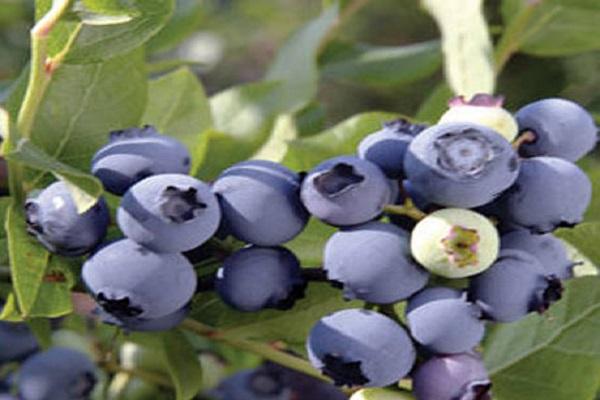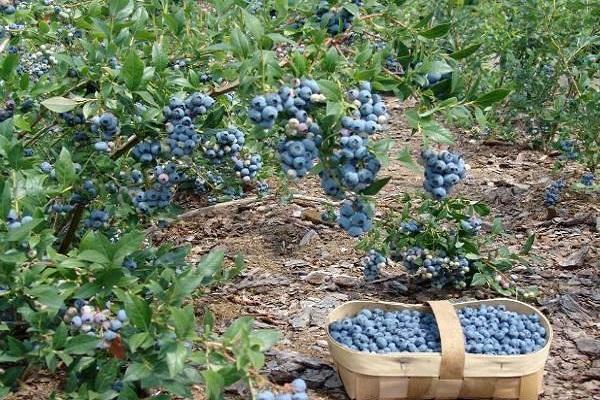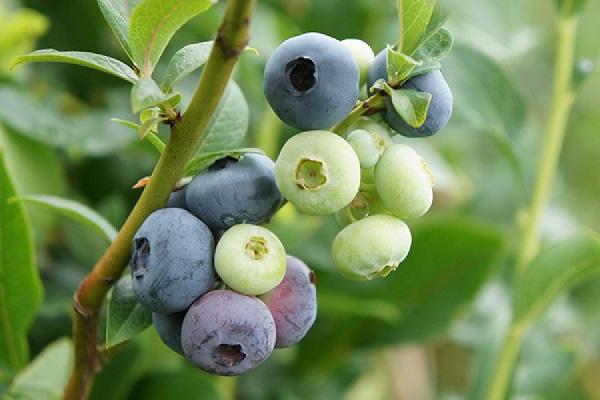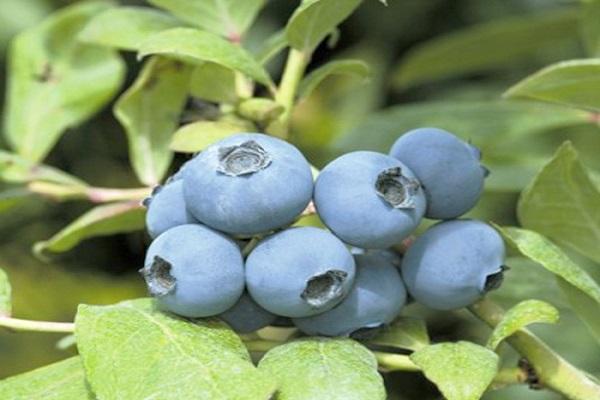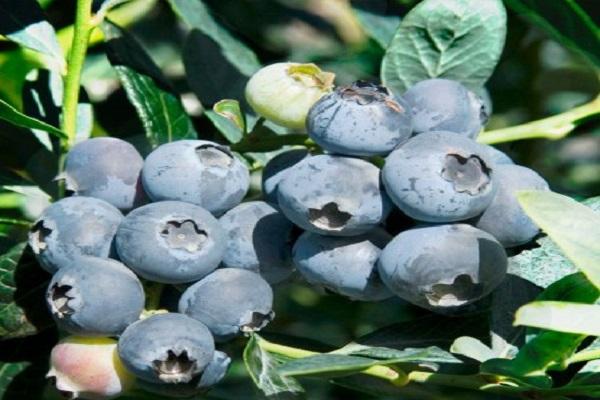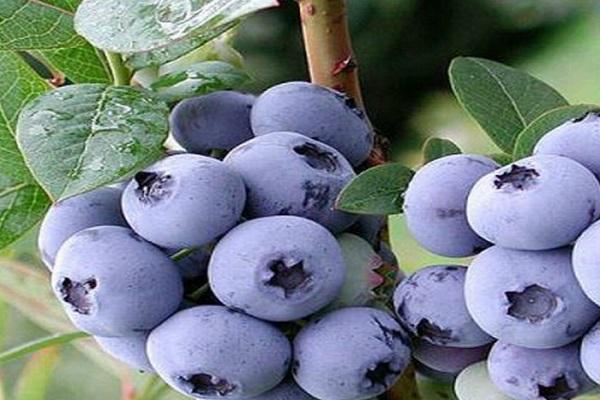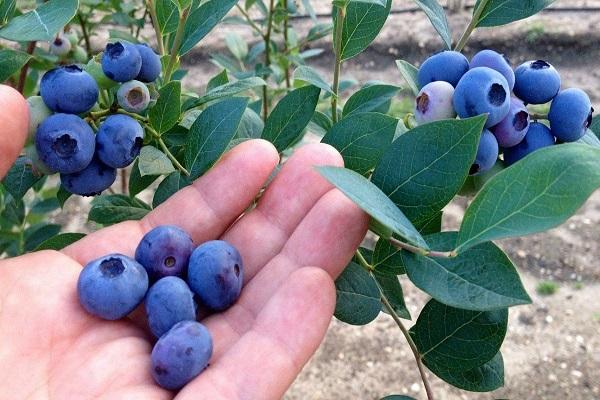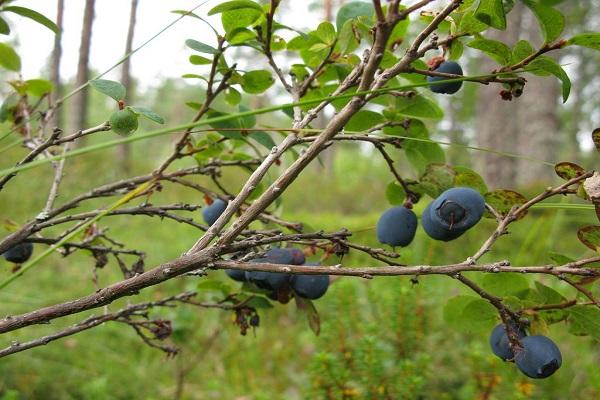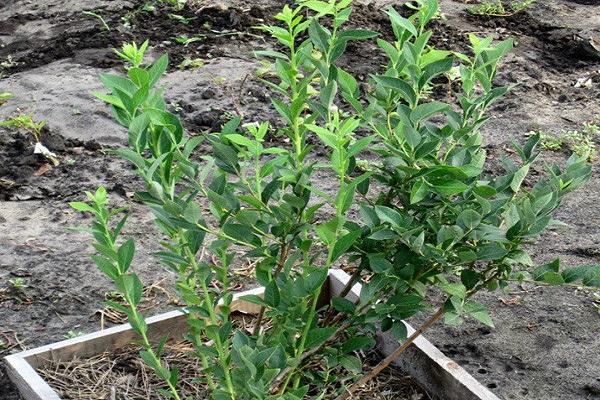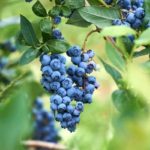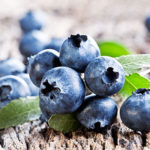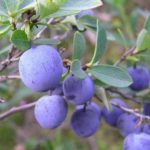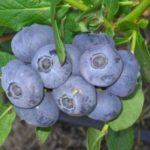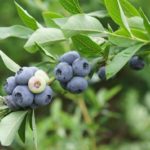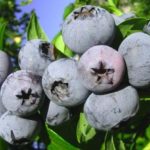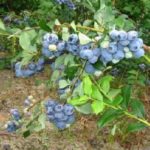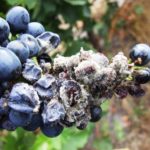Chandler blueberries are widely grown for personal consumption and for sale. The variety appeared on the gardening market 25 years ago and has gained popularity in the CIS countries since the end of the last century. The European berry does not require special care and is easy to grow even by inexperienced gardeners. To successfully grow bushes, you need to familiarize yourself with all the features.
- How the variety was developed
- Pros and cons of culture
- Characteristics and description of Chandler blueberries
- Dimensions and branching of the bush
- Flowering and fruiting
- Collection and use of berries
- Susceptibility to diseases and insects
- Resistance to low temperatures and drought
- Planting a crop on the site
- Optimal timing
- Suitable soil
- Germination by seeds
- Growing by cuttings
- Fruit bush care
- Watering and fertilizing the plant
- Mulching and loosening beds
- Trimming
- Preventative treatments
- Wintering
- Reviews about the variety
How the variety was developed
A variety of large-fruited blueberries was created in 1994 by European breeders. The variety is recommended for cultivation in areas with moderately cold or mild, snowy winters. Chandler blueberries bear fruit late, but the berries are large, juicy, and marketable.
Pros and cons of culture
The Chandler blueberry variety is famous for its many positive qualities, but there are also negative aspects.
| pros | Minuses |
| Stable yield | Requirements for soil composition and fertilizers |
| Large, juicy fruits | Blueberries are poorly transported |
| Low maintenance | |
| Fast fruit growth, disease resistance | |
| Survival at low temperatures |
Characteristics and description of Chandler blueberries
The bush bears fruit late, 2 weeks later than the Bluecrop variety. The berries are more suitable for fresh consumption, as they are not shelf-stable. Blueberries leave no one indifferent not only because of the huge berries that ripen at the same time, but also because of a number of features.
Characteristics of blueberries:
- berries are large, flattened, blue with a whitish waxy coating;
- the fruits are delicate and difficult to transport over long distances;
- The harvest is abundant, regular, harvesting lasts from 4 to 6 weeks, from the beginning of August to September 15.
The bushes can withstand frosts up to 28 degrees, winter hardiness is average.
Dimensions and branching of the bush
A tall shrub grows up to 150 cm in height. The plant has strong, fast-growing shoots and a branched habit. The foliage grows large, white and pinkish. When in bloom, the garden takes on a romantic atmosphere. Blueberries serve as an additional decorative element.
Flowering and fruiting
Chandler blueberries begin to bloom from late June to mid-July. Fruiting starts from the beginning of August, lasts 1.5 months, until October 15. During this period, up to 8 kg of berries can be collected from one bush. Thanks to the extended fruiting period, gardeners can collect fruits as they ripen, even on weekends.
This sign will not appeal to farmers whose activities are aimed at simultaneously obtaining a large amount of crops for sale.
Collection and use of berries
Large-fruited blueberries are harvested in 5-6 approaches, since the yield is extended. The collection starts from the bottom of the bush and ends at the top. The berries are widely used for fresh consumption. The blue, tasty and dense fruits are also used to make preserves, jams, candied fruits, and decorate desserts.
Susceptibility to diseases and insects
The Chandler blueberry variety has powerful immunity and resists fungi, aphids, and cancer. Sometimes you have to fight harmful bugs or diseases with the help of chemicals or folk remedies. The protective functions of the plant depend on proper care and soil fertilization. If left unattended, blueberries will often get sick.
Resistance to low temperatures and drought
The Chandler blueberry variety can withstand frosts of -28 degrees. In most regions of Russia and other CIS countries, this temperature is the norm. The variety is recommended for cultivation in the South, since in northern and middle latitudes, the berries require shelter and can freeze.
Planting a crop on the site
The holes are made in standard sizes - 50*50*60 cm, maintaining a distance between bushes of 2.5-3 meters. One plant should have a space of at least 1.5-2 meters. After planting, constant watering is required, keeping the soil humidity within 70%.Drying out or too much moisture will harm the plant.
To retain moisture, the root circle is covered with a mulch layer. Then frequent watering will not be required.
Optimal timing
Seedlings are planted in open soil in spring or autumn; sprouts can be replanted from March to the end of October, as long as there is no frost, along with the soil. In the South, autumn planting is possible, provided the climate is warm; the young bush will have time to form a rhizome before frost. In the northern regions and the middle zone, planting work is carried out in the spring. It is important that the earth warms up 15-17 cm deep. The air temperature should not fall below 10 degrees Celsius. Otherwise, the seedling will freeze.
Suitable soil
Blueberries prefer to grow on loose soils, with a high content of sand, peat, and acidity within the range of 3.8-4.8 pH. You can plant bushes next to sorrel, mint, and horsetail. If the acidity is 6, blueberries will grow slowly. On neutral or alkaline soils, the variety may not take root.
Germination by seeds
Blueberries are widely propagated using seeds, which are obtained from fully ripened, good fruits. After separating the pulp from the stone, they are dried, and in the fall they are planted on the territory in shallow holes. Before growth, you need to steadily weed, moisten and feed. Afterwards, the young bush is transplanted to a permanent place. It is important to maintain an optimal distance between plants, approximately 0.5 meters.
Growing by cuttings
Propagation of the blueberry variety by root cuttings starts with preparation in November. They are separated from the parent, placed in sand, and placed in a cool place. In 2 years, with careful care, they will turn into viable seedlings.Planting material can be planted in open soil to obtain a harvest for the next year.
Fruit bush care
Caring for blueberries is not difficult, you just need to pay a little attention to them. The following manipulations are carried out:
- regular watering, feeding, weeding;
- mulching beds;
- bush pruning;
- preventative treatments against bugs and diseases.
In the North or in mid-latitudes, bushes need to be covered for the winter.
Watering and fertilizing the plant
Blueberries need to be irrigated 1-2 times a week, depending on weather conditions. For 1 bush you will need 10 liters of water, pre-settled. Do not pour cold liquid, it harms the plant. Regular watering ensures a stable harvest and the formation of flower buds for the next year. Without irrigation, there will be fewer berries.
Drip irrigation is widely used, moisture is sprayed into the ground gradually, the leaves are moistened, and the crop is saved from overheating and drying out.
Fertilizers are applied in March - 50% nitrogen substances. During pollen and ovary, the rest is added. Nitrogen fertilizing is completed in mid-July so that the plant can safely overwinter. Nitrates are not used, they harm blueberries and change the acidity of the soil.
Mulching and loosening beds
To mulch blueberries, use hay, peat, sand, sawdust, leaves or straw. These items are used to cover bushes to protect them from temperature changes, beetle attacks and diseases. A layer of mulch makes the soil looser, more fertile, lighter, and retains moisture.
The most popular method is to cover the berries with sawdust, since this material is the most durable. The mulch thickness should be 10 cm. The first mulching is carried out after planting blueberries in a new place.In the future, the procedure is done as needed. When mulching again, reduce the layer to 5 cm.
Trimming
Pruning of spreading blueberry bushes is carried out at the 3-4th year of their life. Before this, the sanitary formation of the plant is done. Damaged, non-fruit-bearing branches hanging to the side between rows are excised. They interfere with the growth and rooting of powerful, straight shoots. An adult bush should have no more than 5-6 branches. For 5-6 years, anti-aging pruning is carried out.
Preventative treatments
The crop most often suffers from stem cancer. The pathology is caused by a specific fungus. Small red spots appear on the plant. Over time, they become chestnut and acquire an oval shape. In the final stage, the stem dies. Signs of the disease are visible to the naked eye in summer. Cancer usually affects young animals. You can avoid the disease by not planting berries in waterlogged areas and not adding excess nitrogen.
Consistent pruning of the bush will also help. Infected stems must be burned. They also use a 0.2% solution of Topsin and Euparen. Apply 3 sprays per bush, once a week before pollen and the same amount after harvesting. You can treat with Bordeaux mixture in the spring before the leaves bloom and in October, after they fall. If the berry does not grow and becomes dwarf, this signals damage to viral or mycoplasma pathologies. Complete removal of the diseased specimen followed by further burning is required.
Wintering
The winter hardiness of Chandler blueberries is high, but in regions where frosty winters prevail, it is better to cover the bushes with a light, non-woven fabric. Burlap is widely used. The fabric must be breathable. Additionally, blueberries are covered with snow. If the winter is snowless, the stems are tied with spruce branches.
Reviews about the variety
Below are responses from gardeners who grow Chandler blueberries on their property. They will help you learn about all the nuances of the variety.
- Irina Novoselova, 68 years old, St. Petersburg. Hello! Chandler learned about the blueberry variety from a neighbor. I decided to try the culture in my garden. I planted 8 berry bushes. Fruiting occurred a year later, the berries were large, and the harvest was about 30 kg. I prepared smoothies from them, added them to baked goods, and made jams.
- Alexander Vinnichenko, 59 years old, Kyiv. Greetings! I have been growing blueberries for over 15 years. I recently started growing the Chandler variety. The harvest is always abundant, the fruits are large, juicy, and sweet. The bushes were sick with aphids, I removed them with chemicals. I recommend this variety to everyone to grow!

